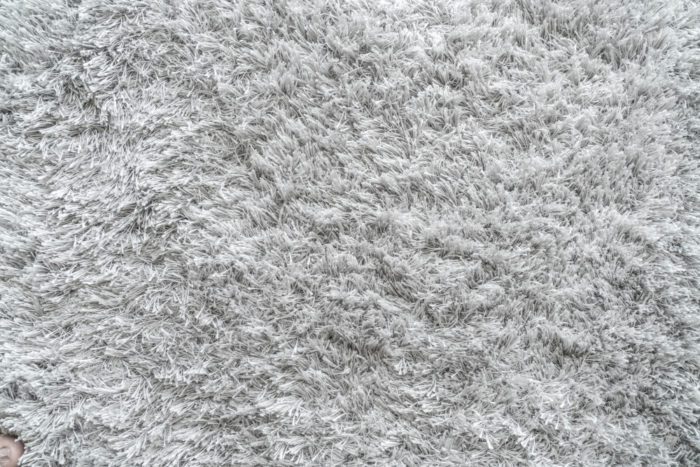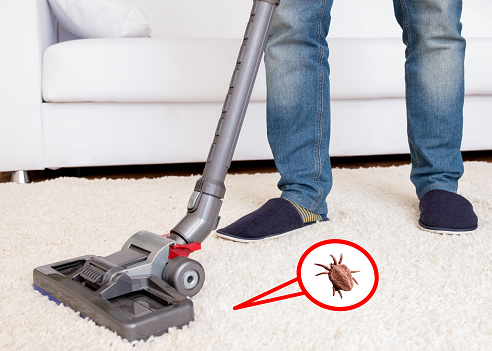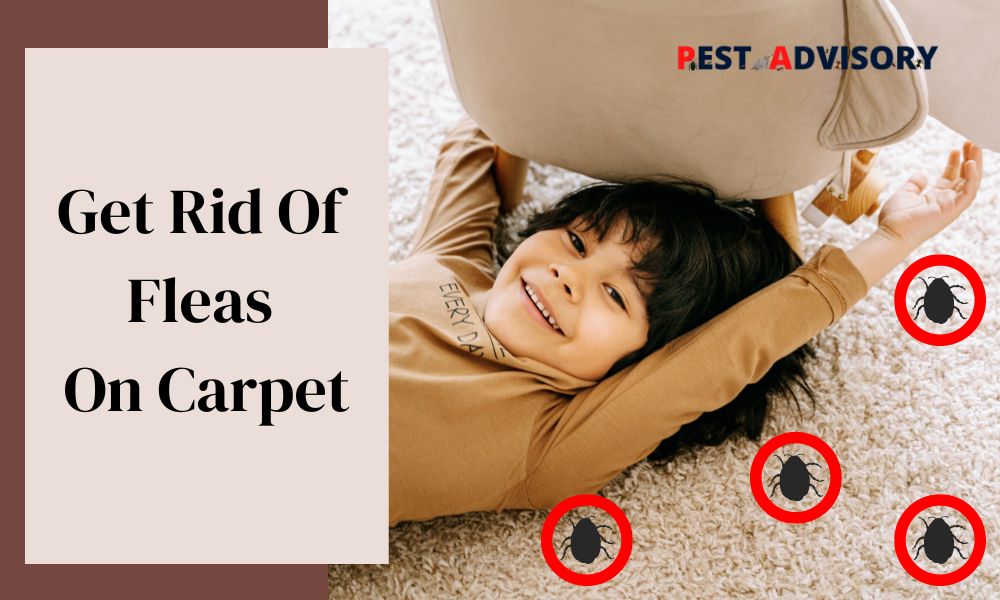Have you ever observed tiny reddish-brown bodies moving on your carpet? They are none other than fleas, parasitic creatures.
Fleas living on your pet might fall off its body and find their way to the carpet. The carpets act as the best hiding spots for them.
We understand that getting rid of them from your carpets and home is difficult. But you do not need to worry anymore. We’ve got your back.
Important Note: If you're tired of pests and want a reliable solution, then you should definitely consider seeking help from a professional pest control company. DIY solutions can be effective, but if you're dealing with a significant pest infestation, you don't want to rely solely on DIY methods. Pest control companies typically don't charge huge fees. You can fill out this form to receive free quotes from the top local pest control companies, and compare the quotes and see for yourself. Then, finally, your pest problems will be eliminated for good.
We have discussed the ways of spotting fleas on carpets, what you can do to get rid of them, and the methods to prevent future infestations of fleas in this article.
How to Spot Fleas on Carpet?
If you ever observe your pet scratching itself, then there are chances of a flea infestation in your home. The irritation and itching can also be caused by allergies or the climate.
So, you need to make sure there are fleas in your home before actually trying to eliminate them.
The easiest way to spot fleas on the carpet to ensure their presence is by using a white cloth. Just take a white cloth and put it on the carpet. Leave it for a few hours.
You will find reddish-brown insects roaming on the white cloth and flea dirt if there are fleas in your home.
You can also wear white or other light-colored socks and walk around your home. You might find a few fleas on your socks after a few hours.
You might feel that these tiny creatures are good for nothing, but they have the potential to cause a pandemic. The most common problem caused by them is itching, followed by allergic reactions.
Once you are sure that there are fleas in your home, the next step is to remove them. Do not ignore their presence and procrastinate in eliminating them.

| Information | |
|---|---|
| Size | 1-4 mm in length |
| Appearance | Wingless and flattened, with a tough exoskeleton for protection |
| Diet | Blood of mammals and birds |
| Habitat | Prefer warm and humid environments, often found on hosts or in their bedding and living spaces |
| Life cycle | Egg → Larva → Pupa → Adult |
| Reproduction | Females lay eggs on their host, which then fall off and develop in the environment |
| Health risks | Can transmit diseases such as bubonic plague and murine typhus, and cause allergic reactions and skin irritation |
Signs Of Flea Infestation
Fleas on Pets
One of the most common signs of a flea infestation is seeing fleas on your pets. Fleas are small, dark-brown insects that feed on the blood of mammals and birds, and they often infest dogs and cats. You may notice your pets scratching or biting themselves more than usual, or you may see fleas moving around on their fur.
Flea Dirt
Flea dirt is the feces of fleas, and it looks like small black or brown specks on your pet’s skin or bedding. To check for flea dirt, use a flea comb on your pet’s fur and look for small black or brown specks that fall off onto a piece of white paper.
Bites on Humans
Fleas can also bite humans, although they prefer to feed on animals. If you notice small red bumps on your skin that are itchy or painful, you may have been bitten by fleas.
Visible Fleas
In severe infestations, you may be able to see fleas jumping around on your carpet or furniture. Fleas are small and can be difficult to see, but if you look closely, you may be able to spot them.
Unusual Pet Behavior
Pets may behave differently when they have fleas. They may scratch themselves more often, lick or bite at their fur, or become lethargic.
Presence of Flea Eggs and Larvae
Fleas lay eggs on pets and in their bedding, and these eggs can hatch into larvae. Flea larvae are small, white, and worm-like, and they feed on organic matter like flea dirt and skin cells. You may be able to see flea eggs and larvae on your pet’s bedding or in areas where your pet spends a lot of time.
How to Get Rid of Fleas on Carpet?
They can live for up to three months on your carpets. The fleas just exist in their cocoon until they sense the presence of blood around them.
So, it becomes necessary to eliminate them from carpets to completely wipe out their population from your home. Otherwise, they will multiply exponentially when favorable conditions return.
Effective methods of Flea Removal
Vacuum Cleaner
Clean the carpets using a vacuum cleaner. It would be best to sprinkle salt, baking soda, or cornstarch powder a few hours before cleaning. Also, wash the carpets and your pet’s bed regularly.

Flea Repellent Spray
You can use a commercial or homemade flea-repellent spray to repel and even kill fleas in your home. Remember to spray the solution into cracks, crevices, and corners.
Salt
Sprinkle salt on the carpets. Salt is an excellent dehydrating agent, and thus, it will kill fleas and their eggs by absorbing the water and moisture around them.
Use of Diatomaceous Earth
Diatomaceous earth is a natural substance that can be used to kill fleas on carpets. It is a powder that is made from the fossilized remains of diatoms. When fleas come into contact with this powder, it dehydrates their bodies and kills them.
Use of Flea Traps
Flea traps can be used to capture fleas that are hiding in your carpet. These traps use light and heat to attract fleas and trap them in a sticky substance. You can purchase these traps online or at your local pet store.
Fleas on carpets indicate that your pet has fleas. Therefore, remember to treat the fleas present on your pet as well.
Preventing Further Flea Infestation
Taking steps to kill fleas just once is not enough. Fleas are great at going underground. They will again come out once you are done with using sprays and other things.
You need to put continuous efforts to make your home flea-free. The most important steps are cleaning your home and bathing your pets regularly.
DIY Natural Remedies
Flea-repellent spray
You can prepare a DIY flea-repellent spray by using diluted essential oils, bleach, or vinegar. It can be used for flea control in both outdoor and indoor areas.
Spray the solution at least twice a week everywhere in the home for a few months. Take the required precautions, like wearing a mask and gloves while spraying the solution.
Deterrent Plants
You can also plant lavender or peppermint plants in your garden to create an extra layer of protection against fleas. The smell of these plants will cause the fleas to stay away from your home.
Grooming Pets Fur
Use a fine-tooth comb to comb your pet’s fur. It will help you not only spot fleas but also remove them from your pet. It is best to use a comb after bathing your pet with flea-repelling shampoo.
Bathe your pets after returning from a routine vet visit. A lot of pets that have fleas in their fur visit the vet, and thus, the chances of your pet acquiring fleas are high.
Important Measures
Remember that all of these products are not necessarily non-toxic. They can cause allergies and even more itching in your pet. Cats are more sensitive to essential oils.
Thus, pay attention while using these products. Observe the reactions of your pet. Keep the spray away from your pet’s reach. Visit a vet if the situation gets out of control.
Never use any chemical product or medicine for flea removal without consulting a vet. Also, do not use any products on puppies or kittens without asking a vet.

Final Words
We understand that fleas are annoying and having them on your pets is one of the worst things to happen. You need to eliminate them as soon as possible.
But do not use harmful chemicals to get quick results. It is likely that fleas will be eliminated, but you and your pet will develop other problems. So, initially use natural products. Use chemicals only if they don’t work.
Contact a vet and exterminators if the flea population is humongous. We hope that you got the desired answers to your queries about the removal of fleas from carpets.

